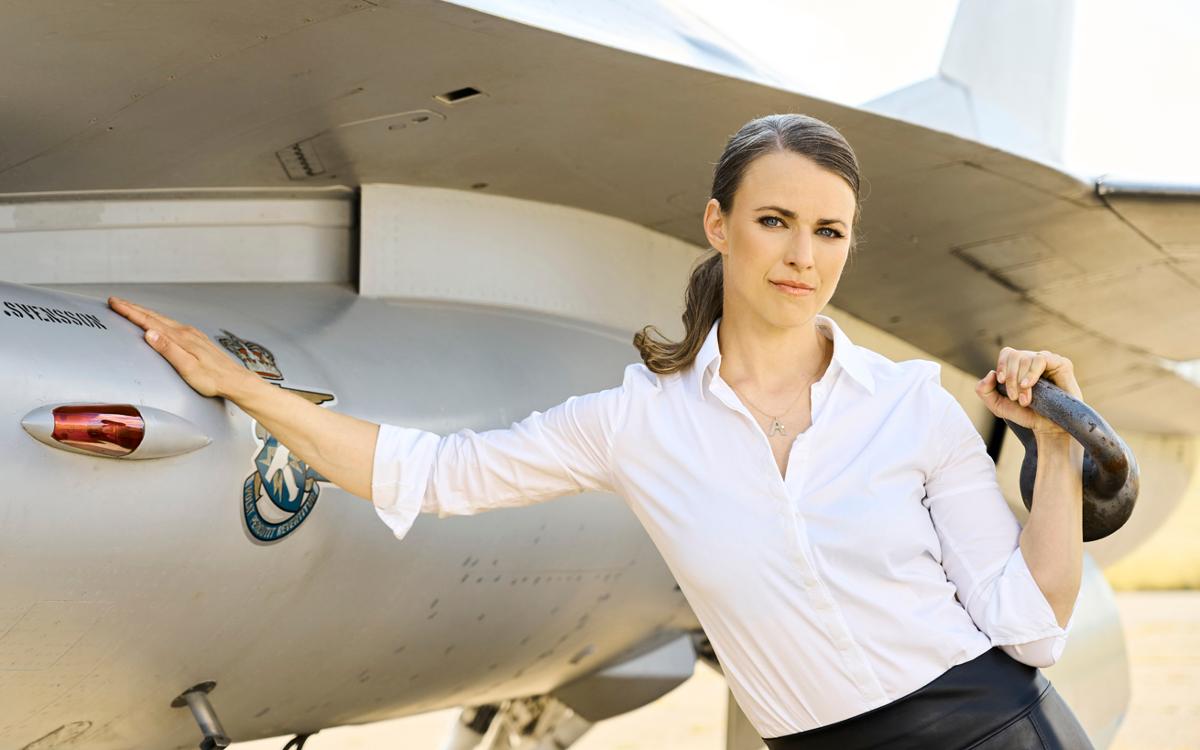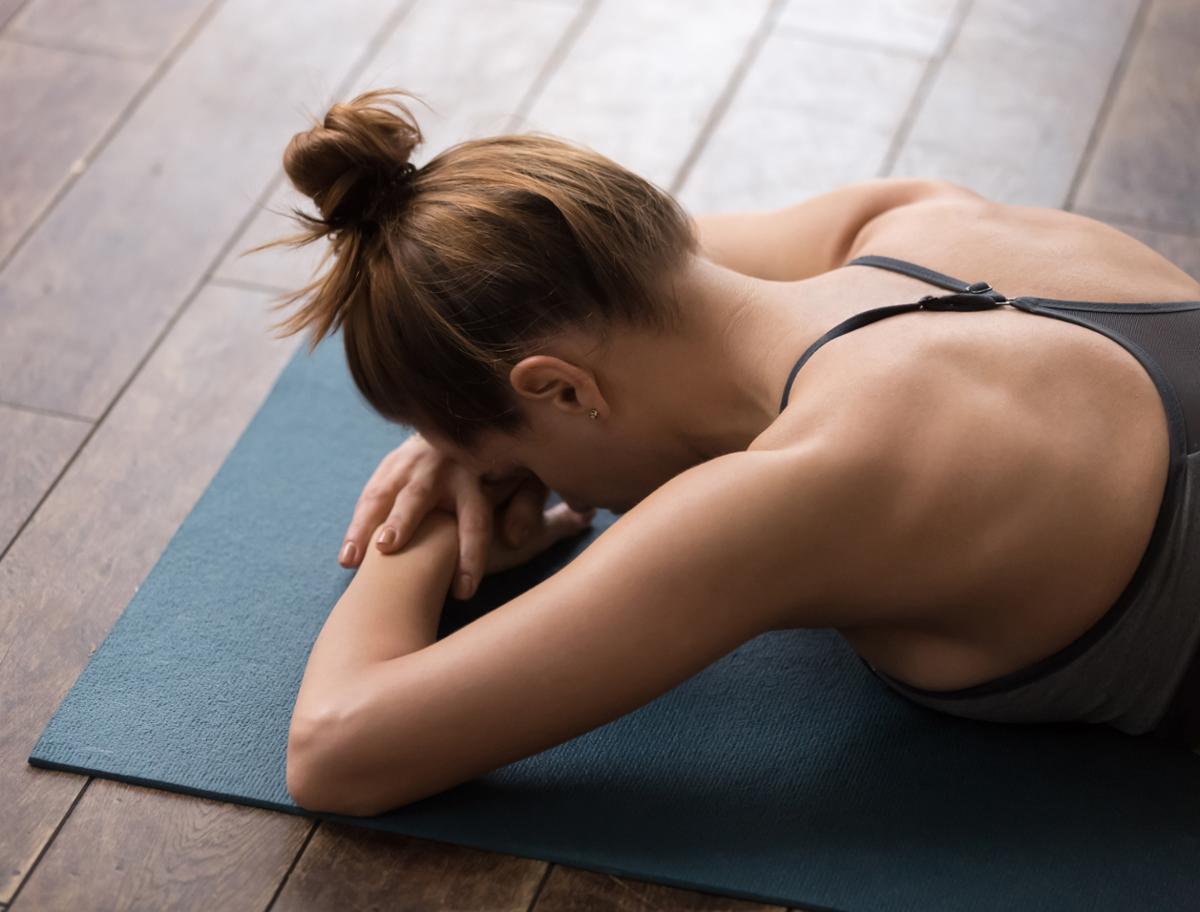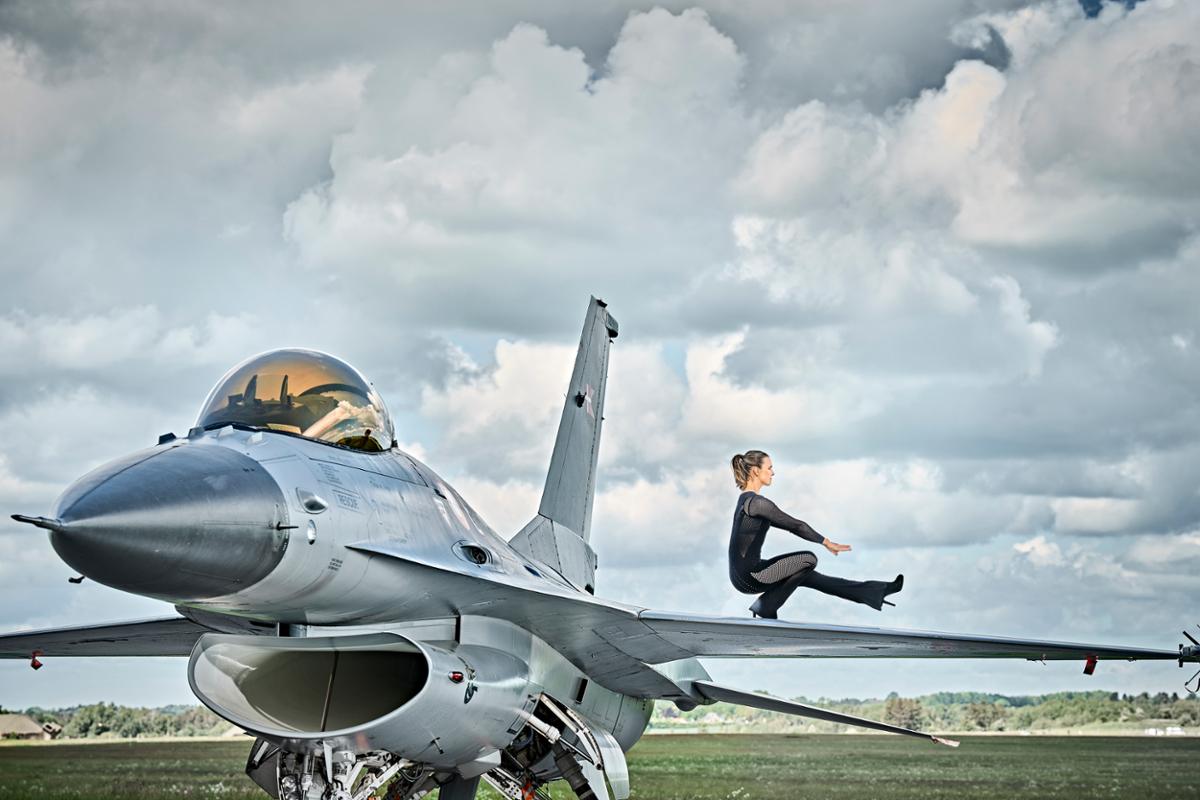Tell us about your work
The Anna Bogdanova Strength Method is all about strength and power training which takes hormones and the nervous system into account.
It strengthens joints and ligaments, as well as increasing the elasticity of skin and connective tissue.
A mix of kettlebell exercises, neuromuscular training and gentle movement which is designed to recalibrate the nervous system, it’s completed in micro training sessions of just five minutes, (or more if the exerciser chooses). The programme is a move away from standard cardio-focused programmes which tend to overlook power.
Having worked with more than 16,000 Scandinavian women, I’ve witnessed huge improvements being made in strength, power and metabolic health by activating the nervous system and engaging dormant muscles.
What’s your core purpose?
I give women the tools to experience how much power their bodies have and create an environment for them to build self confidence and self mastery.
Instead of thinking about how they look, I teach them to focus on what they can accomplish with their body.
By training interoception (a lesser-known sense that helps us understand and feel what’s going on inside the body) with full body, cognitively challenging resistance training, isometrics and breathing exercises, it’s possible to create a feeling of less overwhelm, more drive and capability and improve body image in just a few minutes each day.
What’s your backstory?
I was an unsporty child who got obsessed with the gym in my later teenage years and ran into trouble trying to burn off more calories than I was eating, which led to me fainting after a class.
At that point I started eating more, got into lifting and bulking up. Although this made me feel strong and empowered, it coincided with a lot of stress in my life and I didn’t realise the training load I was putting on my body was stressing my system.
After a couple of years I collapsed and had a period of not wanting to go anywhere or see anyone. I couldn’t do my job and I couldn’t train and if I picked up a weight, I would immediately bloat. I couldn’t understand it.
After researching stress physiology, I discovered my body was responding to being overtrained. When our organism responds to something as if it’s a threat it starts to shut down. My situation was a culmination of many factors in my life, but you can’t always minimise the mental load you have with children, parents, jobs and other stress, so the training load has to fit into that.
How did you respond to having that knowledge?
I started to look at training as something which could be turned up and down in terms of volume, duration and intensity, so it could fit my recovery capacity.
My background is in change management and change processes behaviour design, so I applied that to my training.
What was the outcome?
Working with functional neurology, I researched how our nervous systems control our bodies and how we can use them to turn the power back on.
The gym where I was doing my rehabilitation was interested in my training methods and offered me a job as a personal trainer.
Soon I was attracting clients who also needed to find a new way to train. Most of my clients are women from their 30s onwards who start finding that what they’ve always done doesn’t work anymore: they’re getting more tired and are increasingly lacking in energy.
My sessions with them involved working with the nervous system: sensory exercises, working with eyes and inner eyes, stimulating the cranial nerve, jaw mobility, diaphragm stretch, tissue work in the abdominal area, as well as mobility and stability to get the body safe in movement. Then we progress to strength training.
What is the online offering?
I offer a range of programmes in Danish and – having just celebrated the 10th anniversary of my first digital programme – I’m now launching my signature Wingwoman programme in English.
My programmes offer small exercises – from just five minutes a day – which is a doable target. When everything is chaos you should still be able to manage this. A regular routine creates a domino effect because you have more energy and more strength, so you can do more.
Why is strength training so key for women?
There’s huge focus in the research community on sarcopenia – age-related muscle loss – being a problem for women, even younger women.
During the perimenopause, the brain’s metabolism can go down by up to 30 per cent, leading to a higher risk of cognitive disease and decreasing levels of oestrogen can lead to weight gain. Strength exercise helps by building muscle mass and increasing insulin sensitivity.
Research from Copenhagen University has found that after the age of 50, for example, the brain tissue which activates fast twitch muscle fibres start to deteriorate. Kettlebell training in different planes of motion can boost these fast twitch fibres.
If you could give one message to trainers working with women, what would it be?
Aim to focus more on strength training: fewer reps, longer pauses and get some stimulation of fast twitch muscle fibres going, for insurance against the effects of ageing.
Also, eat more real food! Exercise isn’t just about burning calories. Shift the perspective. Try to get people out of the diet mentality.
Many people resort to snacking, as they don’t tend to eat enough variety in their main meals. Women also tend to undereat protein, but research is showing us that it’s very important for our muscles, our brains, our bones and our overall longevity. If you eat more protein you’ll find you should no longer crave snacks in the afternoon.
Also don’t go low carb! Our most vital longevity resource is fast twitch muscle and to be able to get them to work you need carbs. When you feel full and energised you have more energy, feel stronger and want to work out. When you’re physically active you’re more likely to want foods which are good for you.
Women who are moderately active and weigh around 68kg typically need to consume about 2,200 calories a day, but most think they need to eat less. Energy deficit is a problem, you simply can’t thrive on 1,500 calories per day.
I teach people not to worry about eating. When they eat well they have energy to exercise and when they exercise they make better food choices.























































